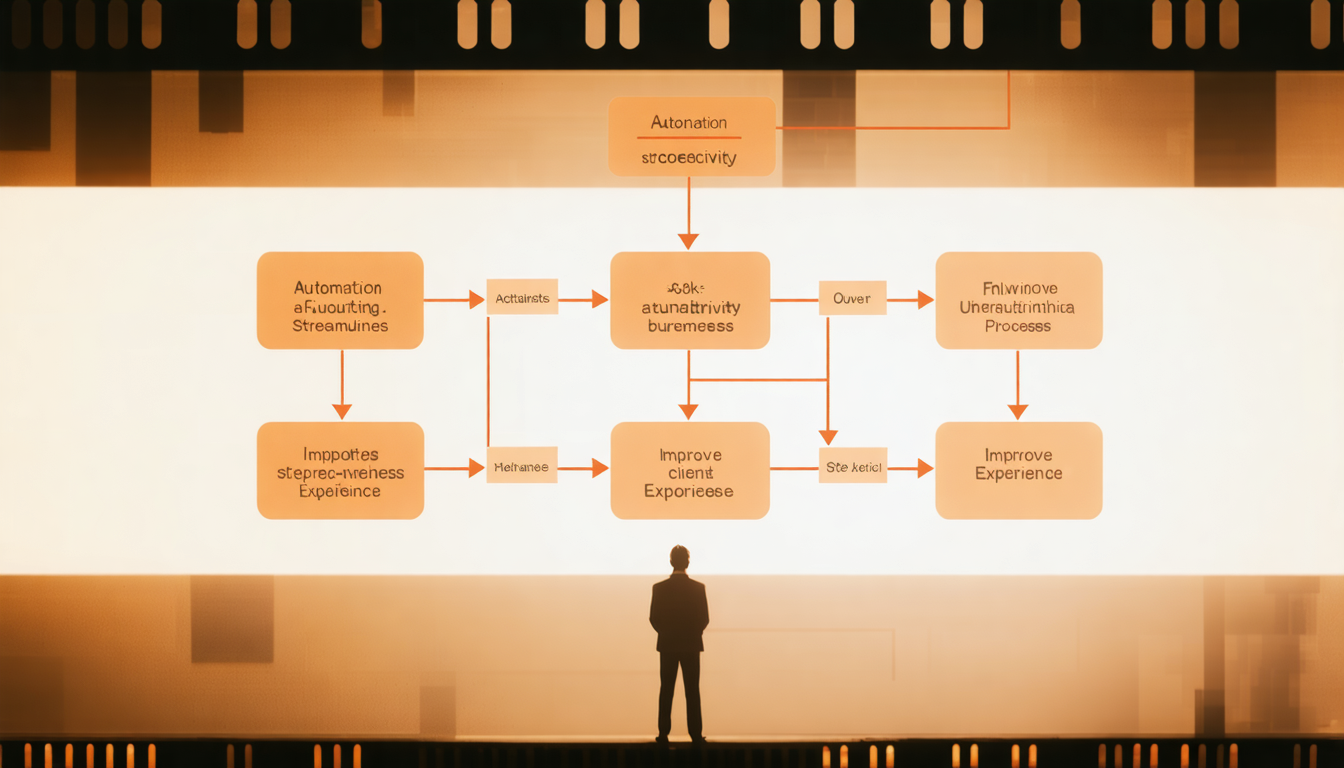Automating Business Processes: Doing More with Less
Learn how automation helps small businesses improve efficiency, save time, and enhance client experiences.

Intro
Running a small business often feels like juggling flaming torches while riding a unicycle. There's always more to do than hours in the day. Sound familiar? You're not alone. But what if you could clone yourself? Not literally, but strategically. That's the power of automation: setting up systems to handle repetitive tasks, freeing you to focus on growth, strategy, and serving your clients.
Is It Time to Automate? ⏳
Not sure where to start or if automation is right for you? See if these resonate:
- Repeating Yourself Often? Do you send the same welcome emails, follow-up reminders, or invoices repeatedly?
- Data Entry Drag: Are you manually copying information between spreadsheets, your CRM, and other tools?
- Appointment Chaos: Does scheduling client calls or meetings eat up significant chunks of your day?
- Inconsistent Follow-up: Do potential leads or client check-ins sometimes slip through the cracks?
- Reporting Roadblocks: Is gathering data for basic performance reports a manual, time-consuming chore?
If you nodded along to two or more, automation could be a game-changer for your business.
Story: The Overwhelmed Consultant
Meet Sarah, a solo marketing consultant. She loved crafting campaigns but dreaded the admin: manually sending proposals, chasing invoices, scheduling discovery calls, and onboarding new clients. Each task stole precious hours she could have spent on billable work or business development. By automating her appointment scheduling, invoice reminders, and client onboarding email sequences, Sarah reclaimed nearly 8 hours per week. This allowed her to take on an extra client retainer, boosting her income without working longer hours. Automation didn't just save time; it directly fueled her growth.
Getting Started: Your Automation Toolkit 🛠️
Ready to dip your toes in? Focus on high-impact, low-complexity areas first. Here’s a simple framework:
- Identify the Bottleneck: What repetitive task frustrates you most or takes the most time? (Use the checklist above!)
- Map the Process: Briefly outline the steps involved in that task. Where does the information come from? Where does it need to go?
- Explore Tool Categories: Look for tools designed for that specific function:
- Email Marketing: Automate welcome sequences, newsletters, and segment-specific campaigns (e.g., Mailchimp, ConvertKit alternatives).
- Scheduling: Let clients book time directly onto your calendar based on your availability (e.g., Calendly, Acuity Scheduling alternatives).
- Social Media: Schedule posts in advance across multiple platforms (e.g., Buffer, Later alternatives).
- Invoicing/Payments: Automate invoice creation and payment reminders (e.g., QuickBooks, Stripe integrations).
- Task Management: Create recurring tasks or automate notifications for project milestones (e.g., Asana, Trello automations).
- Integration Platforms (Advanced): Tools like Zapier or Make can connect different apps that don't naturally talk to each other.
- Start Small & Test: Implement ONE automation. Test it thoroughly. Does it work? Does it save time? Is the experience smooth for you and your clients?
- Iterate & Expand: Once you're comfortable, tackle the next bottleneck.
Conclusion
Automation isn't about replacing the human touch; it's about amplifying your impact by handling the mundane. By strategically automating tasks, you free up valuable time and mental energy to focus on what truly matters – growing your business and delighting your clients.
Ready to explore how technology can strategically serve your business goals? Implementing the right systems can feel overwhelming, but you don't have to do it alone. Consider how expert guidance could accelerate your journey to doing more with less.